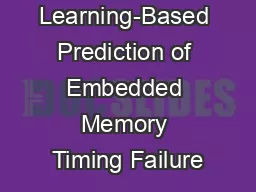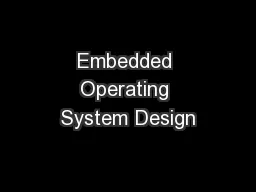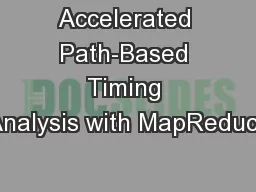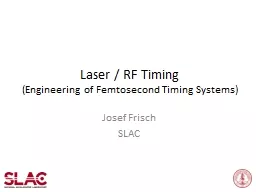PPT-Learning-Based Prediction of Embedded Memory Timing Failure
Author : aaron | Published Date : 2017-09-19
WeiTing J Chan Kun Young Chung Andrew B Kahng Nancy D MacDonald and Siddhartha Nath Outline Motivation Previous Work Our Work Multiphysics Analysis Modeling Methodology
Presentation Embed Code
Download Presentation
Download Presentation The PPT/PDF document "Learning-Based Prediction of Embedded Me..." is the property of its rightful owner. Permission is granted to download and print the materials on this website for personal, non-commercial use only, and to display it on your personal computer provided you do not modify the materials and that you retain all copyright notices contained in the materials. By downloading content from our website, you accept the terms of this agreement.
Learning-Based Prediction of Embedded Memory Timing Failure: Transcript
Download Rules Of Document
"Learning-Based Prediction of Embedded Memory Timing Failure"The content belongs to its owner. You may download and print it for personal use, without modification, and keep all copyright notices. By downloading, you agree to these terms.
Related Documents














